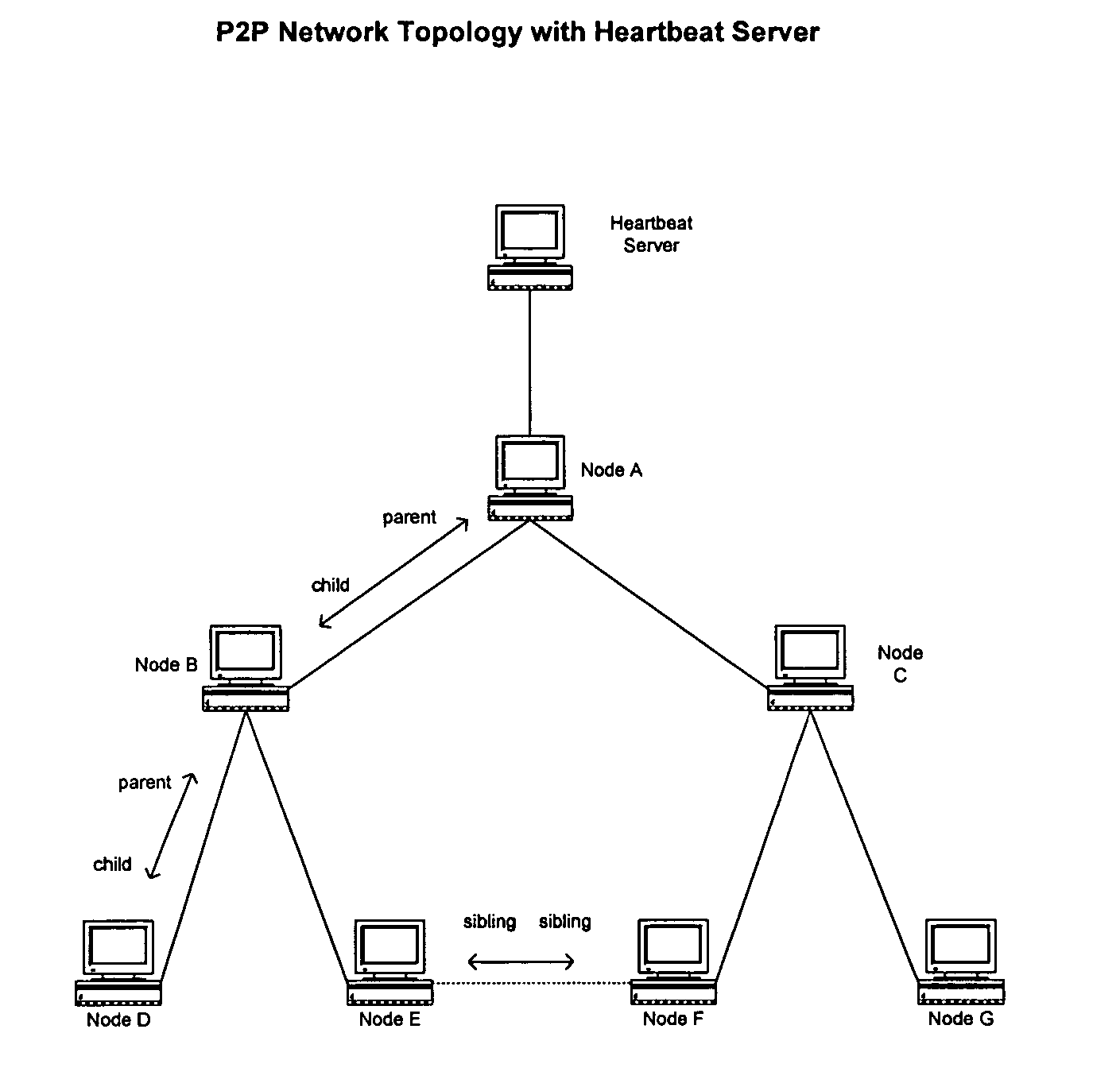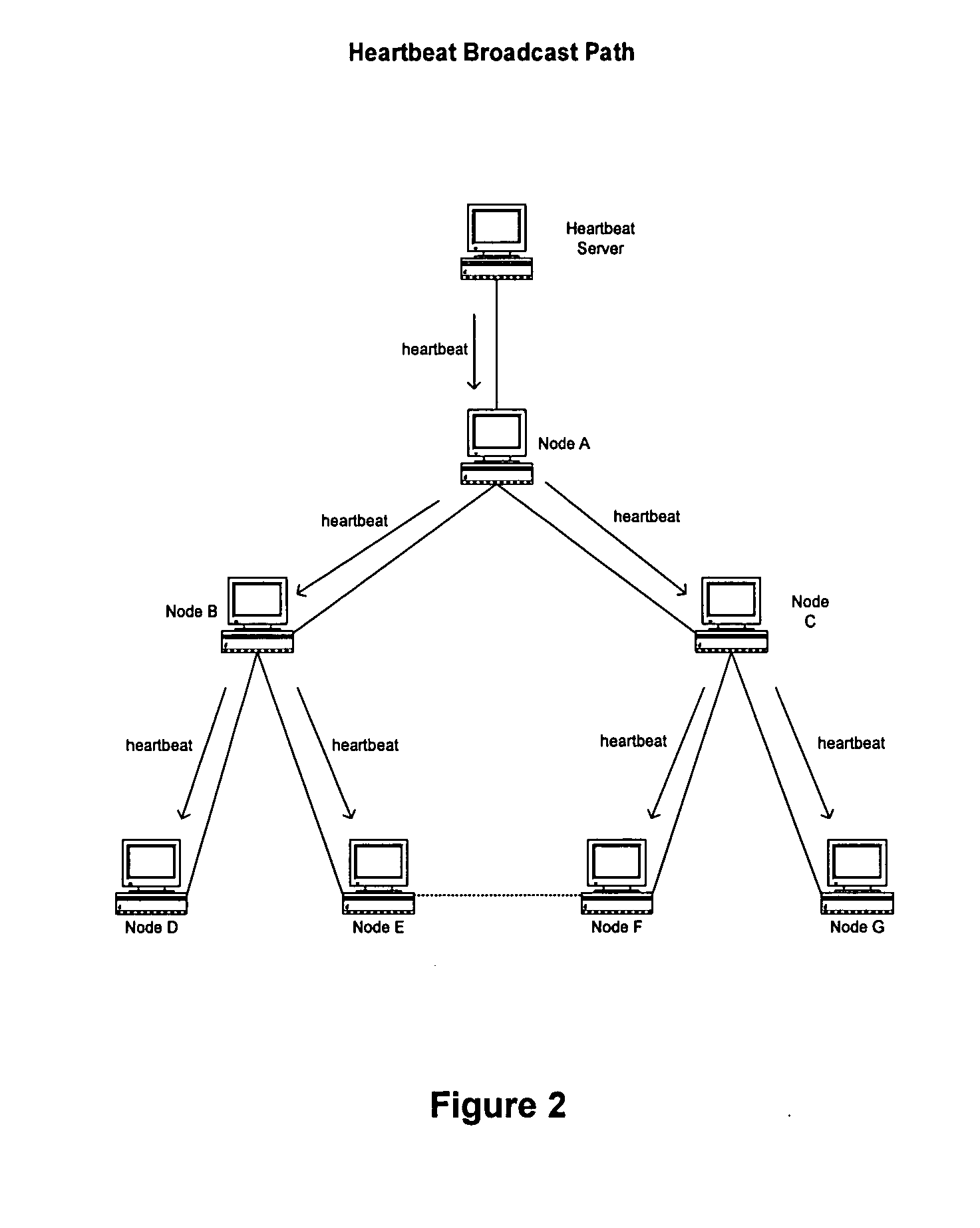Peer-to-peer network heartbeat server and associated methods
a peer-to-peer network and heartbeat server technology, applied in the field of computer networks, can solve the problems of no simple or efficient method to count and identify, no simple or efficient method the crawler will take exponentially more time to crawl the network, so as to achieve the effect of not compromising speed and efficiency, and less bandwidth
- Summary
- Abstract
- Description
- Claims
- Application Information
AI Technical Summary
Benefits of technology
Problems solved by technology
Method used
Image
Examples
Embodiment Construction
[0056] While the present invention will be described more fully hereinafter with reference to the accompanying drawings, in which a preferred embodiment of the present invention is shown, it is to be understood at the outset of the description which follows that persons of skill in the appropriate arts may modify the invention herein described while still achieving the favorable results of this invention. Accordingly, the description which follows is to be understood as being a broad, teaching disclosure directed to persons of skill in the appropriate arts, and not as limiting upon the present invention.
[0057] The following describes a specific implementation, operation and use of a heartbeat server, as embodied in a Gnutella peer-to-peer network.
[0058] A heartbeat server is a node on the network which forwards heartbeat messages to its directly connected neighbors. These neighbors forward the message to their neighbors and so on, in the manner of a traditional peer-to-peer query ...
PUM
 Login to View More
Login to View More Abstract
Description
Claims
Application Information
 Login to View More
Login to View More - R&D
- Intellectual Property
- Life Sciences
- Materials
- Tech Scout
- Unparalleled Data Quality
- Higher Quality Content
- 60% Fewer Hallucinations
Browse by: Latest US Patents, China's latest patents, Technical Efficacy Thesaurus, Application Domain, Technology Topic, Popular Technical Reports.
© 2025 PatSnap. All rights reserved.Legal|Privacy policy|Modern Slavery Act Transparency Statement|Sitemap|About US| Contact US: help@patsnap.com



